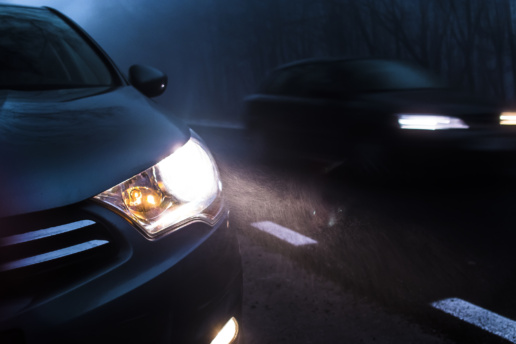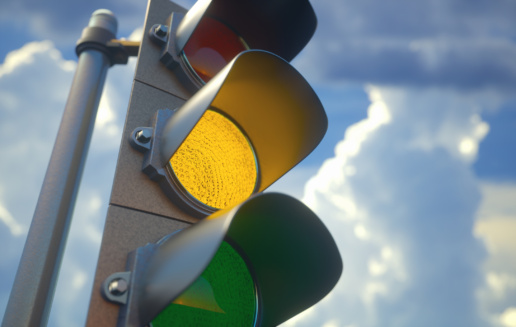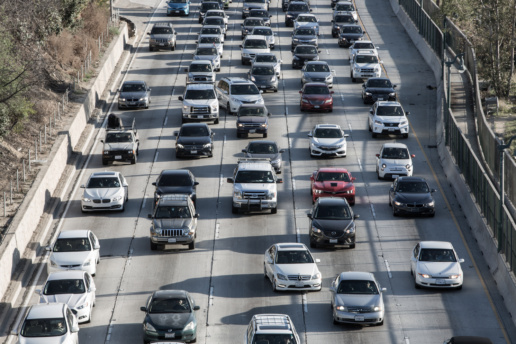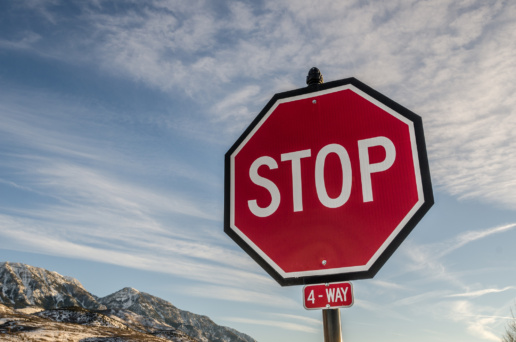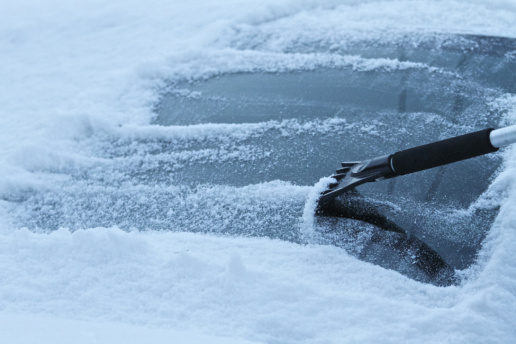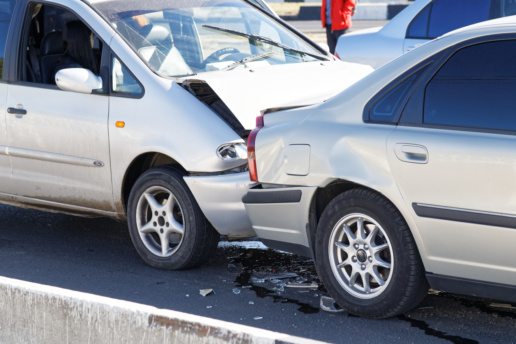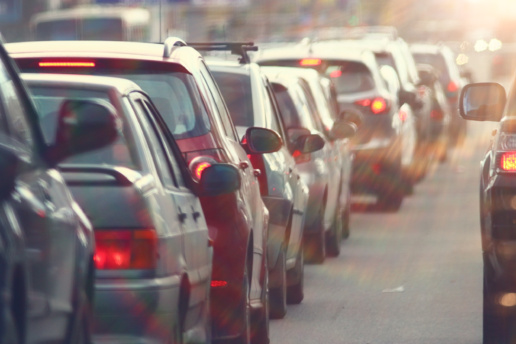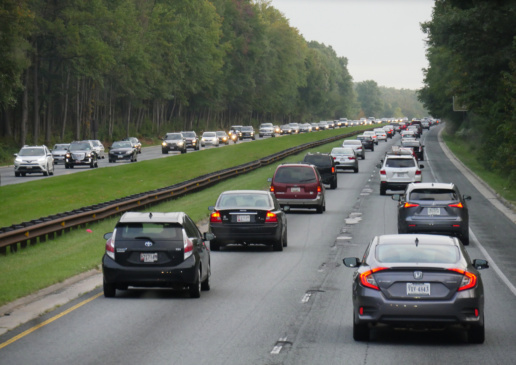Headlights - The High Beam Kind
I think we can all agree, being blinded by someone who has their “brights” on is beyond annoying. Aside from spots seared onto my retinas, it’s dangerous. You seriously can be temporarily blinded by them. Kinda like this:
I always wonder, did they turn their brights on by accident?
Do they not know their brights are on?
Or, did they turn them on on purpose?
Either way, it drives me crazy.
The driver’s manual says: “Use high beams on open roads, which are not lighted by streetlights, in order to see persons or vehicles ahead. Be aware, you must change to low beam at least 500 feet before meeting oncoming vehicles and when following a vehicle at a distance of 300 feet or less."
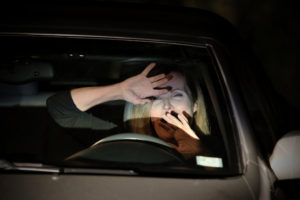
There are some really funky – and some illegal – headlights out there these days, so sometimes it’s hard to tell if they are really, in fact, high beams, or if they are just some new brand of headlight. Google ‘bright headlights’ and you’ll find plenty of articles on the subject.
My plea? Pay attention and make sure your brights aren’t on when you’re in traffic. And, if you’ve gotten some of those new-fangled lights, stay away from me!
Resources:
Driving-Tests.org: When Should High Beam Headlights Be Used? [this is good!]
HawaiiNewsNow: Super Bright Headlights Violate Rules of the Road
Are headlights getting brighter? (Be sure to check out the Mercedes Benz headlight video!)
You’re not just getting older, headlights are getting more powerful
Those Bright Headlights Aren’t just Annoying, They’re bad for your eyes
Headlights – The Low Beam Kind
Lights help you see, and other drivers see you. Basic, right?
The driver’s manual says, “when driving, you must turn your headlights on anytime there is not enough light to clearly see at least 1,000 feet ahead of your vehicle.” I don’t know about you, but I have no idea how far 1,000 feet is.
Key times to use headlights are at night, in stormy weather or with fog. Duh.
Some states require by law that you turn on your lights when your windshield wipers are on. ‘Wipers on. Lights on.’
Check AAA’s brilliant Digest of Motor Laws to see what your state’s law is.
The rules for use of low beam lights – your normal old regular head lights – are night driving, driving in fog, rain, snow, etc., or when entering a tunnel or construction area.
Too often, if you ask me, people forget to turn their lights on – say during the transition from light to dusk to dark. Like, the nightly rush hour. You are virtually INVISIBLE in my rearview mirror if your lights aren’t on.
With a lot of newer cars these days, you can set your lights to automatic. So, they come on on their own when it gets dark enough.
But, the other thing I have noticed A TON lately is cars who appear from behind to not have headlights on because their taillights aren’t on.
READ: If your car lights are set to automatic, there are certain features that don’t activate. For example, in my car, if my lights are set to automatic, my taillights don’t come on, nor do the defrosters to my side mirrors. I have to manually flip my lights to ‘ON’ in order for those features to work.
I can’t tell you how many times I have been behind someone in the dark and it appears as though they don’t have their headlights on – no tail lights. But, when I get up next to them, I see that their lights ARE on. It’s because they haven’t flipped to manual lights.
How many people have read their car manual and know this?!
Check out this from carbibles:
“…This problem is confounded by people's lack of understanding of how automatic headlights work. … With most new vehicles, in an increasing number of countries, even with the headlights turned to the "off" position, the vehicle shows daytime running lights (DRLs). These are either LED lights or small bulbs in the headlights that are always on. Importantly, in this state, the rear lights are always OFF. This is bad because people become used to thinking their headlights are on all the time, (they're not – DRL’s are not headlights), which means when you get into heavy rain, spray, bad visibility and poor weather, the drivers think they're lit up but from the rear, they're completely invisible.
“With headlights in the ON position, it's what you'd expect - headlights and tail lights - but now you're relying on people manually turning their headlights on and off in varying weather conditions and at different times of day.”
Read your car manual and know how your lights work, people! And, just as importantly, make sure you turn on your darn lights at night!
Resources:
Quora: How do automatic headlights work?
Don’t Block the &*$^#@ Box
I’m not sure how I’ve survived this long without writing a post about “blocking the box.” This blog is, after all, about venting on what dummy drivers do.
I get so furious when this happens.
If you don’t know what I’m talking about, here is what it means to “block the box”:
When a driver enters an intersection and is unable to travel all the way through during the green light, thus preventing cross traffic movement when their light turns green, and endangering other travelers by blocking crosswalks and bike lanes. Blocking the box is rude, illegal in many places and causes gridlock.
This video does a great job of illustrating “Blocking the Box”:
Everyone is trying to make it through the light. I get it. But sitting in the middle of an intersection after your light has turned red thus preventing me and everyone else from going on our green light, is the HEIGHT of selfishness. It is so intensely rude.
I get that it is tempting particularly when you are in a hurry or you are at an intersection that is notoriously bad.
BUT DON'T FREAKING DO IT! RESIST THE URGE!
Many cities, thank goodness, have enacted laws. Sadly, it seems to rarely be enforced.
Atlanta, Austin, Baltimore, Boston, Hartford, Los Angeles, Miami, New York, San Antonio, Seattle, Tampa, Washington, D.C., and on and on and on all have laws on the books.
Blocking the box: All-star edition, only needs a city bus pic.twitter.com/Q4Jxm874JV
— Justin Fenton (@justin_fenton) May 29, 2018
Lookie what I caught on camera this AM on the way to work. Another @CapMetroATX bus blocking the box. This was 8:34am at 5th/Lavaca. It was bus 2025. Cc: @Austin_Police, @KXAN_News, @KVUE, @bwear, @fox7austin. #atxtraffic pic.twitter.com/9mcj3pwr1N
— Regan Ellmer (@rellmer) June 8, 2018
The “Orange” Light
Something we’ve ALL done is speed through what I like to call the “Orange” light. You know the one, somewhere between yellow and red. As in, the yellow light is on the verge of turning red and you think, “I can make it!”
According to the AAA Foundation for Traffic Safety's 2016 Traffic Safety Culture Index, "most drivers (92.8%) view it as unacceptable to drive through a traffic light that just turned red when they could have stopped safely; however, more than 1 in 3 drivers (35.6%) admit doing this in the past month."
I’m not really going to pass judgement here other than to say, there is a very fine line between that orange light and the red one. And when a driver crosses that line, and runs the red light, well, it jeopardizes me and everyone else on the road. And that’s not ok.
What does the driver’s manual say?
“The steady yellow signal means that the signal is changing from green to red. Its purpose is to provide time for approaching traffic to stop safely and to clear other vehicles from the intersection before the signal turns red.
“The steady red signal means come to a complete stop at the stop line and remain stopped as long as the signal is red [except of course where ‘right on red’ is allowable].”
The split-second orange signal means…
Well, depends on who you ask. #uptointerpretation
For some, it means “floor it!” For others, it means “dang it, I missed the light.”
Whatever your approach, safety is what matters to me. May not matter to you because you may think you are the center of the universe.
I have news for you:
We’re all in a hurry to get where we’re going, but when another driver’s selfishness infringes on my safety, that drives me crazy.
I find myself asking, “will it have been worth it to have run this light (or cut this person off, or failed to signal, or sped at 90 mph, etc.) if I get in an accident that harms me or someone else?”
The answer is ALWAYS “no.” Uh-uh. Nope.

Some cities are deemed more dangerous than others when it comes to red-light running. Do you live in one of them? And what’s up with the peeps in Arizona? Check out Statista Red Light Running Chart .
Resources:
NBC News: Deaths caused by drivers running red lights at 10-year high
The National Coalition for Safer Roads (NCSR) has excellent resources on this topic.
Which U.S. Cities have the Most Red-Light Running Fatalities? | Stop on Red Week | Get the Facts
This is also an intriguing concept: What if the traffic lights changed from red to yellow before changing to green?https://giphy.com/gifs/FEikw3bXVHdMk/html5
Metaphor for Life (and Driving): Stay in your Lane
Ever seen a car next to you coming over into your lane? Or driving smack in the middle of two lanes? Or worse, coming straight at you IN your lane? Good for a nice little heart attack.
It happens more often than I care to say.

I find myself wondering what the heck that driver is thinking. Clearly, it’s not about their driving.
My guess? It has to do with a lack of…FOCUS. Distracted driving, anyone? How many of us get behind the wheel of our car and turn on the proverbial “autopilot”? Thinking about the raise you want at work, or that fight you had, or the bill you need to pay, or any of a million other things we all grapple with in life…
I digress.
People seem to think driving almost/partially/halfway/sort of in their lane is ok. It’s not!
Don’t freaking cross solid white lines! Period. End of story. And while you are at it, don’t cross the dotted ones when there is a car next to you! Duh!
Stay. In. Your. Lane. [a metaphor for life]
If you need a reminder, buy a T-shirt or mug. Whatever it takes.
Straight from the driver’s manual: “Your vehicle should be driven in a single lane (emphasis added!). Do not switch lanes until you determine it is safe to do so. You should avoid drifting across lane lines (emphasis added again!) and making lane changes within an intersection. Generally, you should keep your vehicle to the right of the center of the roadway, unless you are passing another vehicle going in the same direction, there is a traffic signal designating it is okay to do so, or there in an obstruction that makes it necessary to safely adjust your position.”
The Seemingly Hard to Understand 4-Way Stop
Since I started writing this blog, I’ve had a lot of people ask that I write on the subject of the 4-way stop. Apparently, there is a collective belief that people don’t seem to know what the heck to do when faced with one.
I’m here to help.
The simple rule is this: “Automobiles leave the stop sign or traffic light in the same order in which they arrived at the stop.”
Let’s assume it’s a busy intersection and there are lots of cars lined up at each one of the four stop signs.
First off, you are taking turns – all four of you. TAKING TURNS.
So, car A (first one to reach the 4-way stop) goes, then car B (the second person to have reached the 4-way stop) goes, and the same for cars C and D. If you are behind car A, YOU DON’T GET TO GO UNTIL B, C, and D HAVE ALL GONE.
Same for car B. If you are behind car B, you don’t get to go until C, D and A have all gone.
Last person to reach the 4-way stop is the LAST PERSON TO GO!
Here is a boring, but informative, video on how this all works:
And here’s a nifty, short video:
What happens if you and another car arrive at your respective stop signs at the same time?
The driver’s manual says: “You should yield the right-of-way to the driver on your right at a four-way intersection controlled by stop signs.”
You can also just let the other car go. #courtesy
The problem arises when a doofus completely ignores the rule.
Someone who either wasn’t paying attention to the order in which he arrived or simply doesn’t care, disrupts the whole system, infuriates other drivers like me and risks causing an accident...
https://drivingmecrazyblog.com/2019/01/14/accidents-there-aint-nothing-good-here/
Don’t do that.
Special Note: If you find yourself at an intersection where the traffic lights are blinking red...treat it like a 4-way stop...as in, TAKE TURNS going!
Resource Links:
https://www.vdriveusa.com/resources/how-a-4-way-stop-works.php
https://www.topdriver.com/education-blog/4-rules-4-way-stops/
https://thenewswheel.com/lets-settle-this-who-has-the-right-of-way-at-a-four-way-stop/
Get the Dang Snow Off Your Car Roof
It seems à-propos at this time of year – winter – to talk about massive flying discs of snow that come hurling at you on the highway at high rates of speed, usually after going over a bump in the road.
And, while I don’t get as riled up about this subject as others, that’s probably only because it happens on a more limited basis during a specific time of year.
If you live in a cold weather state like I do, you play a game of highway dodgeball, swerving to avoid said flying discs and hoping they don’t smash into your car like this:
It’s particularly frightening when those discs come flying off of a semi-truck.
People complain it’s too difficult to clear off the top of their vehicle. But is it? Really?
Sure, it’s certainly easier to just clear off your windshield and windows – although some people for some bizarre reason don’t even bother to do that. Plain stupidity.

And clearing off your rooftop requires a tad more time and you probably need to climb up on the frame of your car to do it adequately, but…
… people have been KILLED by these flying discs! Like dead. Or, their car has been damaged, or it has caused someone to swerve and they hit you [see: Accidents: Ain’t Nothing Good Here].
We could also display a little Canadian Road Rage ![]()
The Law: Almost a dozen states have passed laws requiring drivers to remove snow and ice from their vehicles. These laws are often enforced at the discretion of the highway patrol and can result in a fine. The states that currently have laws on the books are:
Alaska
Connecticut
Georgia
Massachusetts
Michigan
New Hampshire
New Jersey
Pennsylvania
Rhode Island
Tennessee
Wisconsin
Trucking.org has a decent 2016 list of the deets in each state.
Have you ever experienced this?
Resource Links:
Good Housekeeping. You heard me, Good Housekeeping
Weather Guide
Accidents: There ain’t nothing good here
***Let me preface this post with this: I hope no one dies or is injured in any accident. Period.***
Now, let me tell you something you already know: There ain’t NOTHING good about a car accident.
Accidents ruin your day.
And my commute.
And the commute of, literally, hundreds (thousands?) of people you have inconvenienced because you were driving too fast, failed to signal when changing lanes, didn’t look when changing lanes, didn’t see the person in front of you slowing down or stopping, were driving too close to the person in front of you etc. etc. etc.
How many people have you made late to work, to school, to an important meeting, to an interview, to a doctor’s appointment? Bet you didn’t think of that did you?!
And add to the whole mess that every single person driving by your accident slows down to look. We are a voyeuristic species, hoping to get a glimpse of something gruesome or seeing if you know someone involved in the crash. #rubbernecking
The lesson here? DON’T FREAKING CAUSE OR GET IN AN ACCIDENT.
The reality is, maybe all accidents can’t be avoided. But I’d be willing to wager that most can. You’re gonna hear this word a lot from me….fewer accidents will require….FOCUS.

Pay attention to the roads people! And to the cars around you! Be a defensive driver like you were taught in drivers ed. And lift that lead foot on up!
I would rather get to my destination 5 minutes late than get in an accident ANY day. But I also don’t ever want to be the driver that caused a gazillion people to have to sit on the highway that is now a parking lot.
This is actually a very thorough article on what to do if you do happen to get into an accident:
Art of Manliness: What to Do if You Get in a Car Accident
This too:
Resources: https://www.nsc.org/road-safety | http://fortune.com/2017/02/15/traffic-deadliest-year
I’m sure I’ll be writing a lot more on this topic, but for now, google ‘what to do in an accident’ and you’ll find an insane number of articles and videos…most of which are from lawyers and insurance companies. Ah, America!
Hitting Your Brakes vs. Taking Your Foot Off the Accelerator
If you’re like me, you experience a painful amount of traffic on the roads on your daily commute.
One of the most frustrating parts of the commute is the speed up, slow down, speed up, slow down. Brakes. Gas. Brakes. Gas.
When someone ahead of you slams on their brakes, what happens? You slam on yours, the person behind you slams on theirs, etc. The domino effect. A sea of red brake lights.
Everyone stops and everyone has to start back up again. Stop. Start. Stop. Start. It’s torturous.
Have you ever screamed, “JUST GO 20 MPH. EVERYONE JUST GO 20 SO WE CAN ALL KEEP MOVING!”
Here’s something to consider: I believe there are times when taking your foot off the gas is as effective, if not more effective, than applying the brakes as it relates to keeping traffic moving.
This only works, of course, if you aren’t on the tail of the person in front of you and you have maintained a safe distance.
Slowing your vehicle by coasting vs. applying your brakes has the potential to prevent triggering the domino effect -- sending a signal to everyone behind you to slam on their brakes too. Everyone keeps moving. And isn’t that what we all want? To keep moving?
This whole concept requires you to be an attentive, defensive driver, something that, alas, is not particularly common these days.
If you ARE an attentive driver, consider this option, safely. Please.
Don’t get sucked in to the start stop trap.
Interested to hear your commuting hacks. Send them in!
The Emergency Lane: Your Personal Lane?
Picture this: Bumper to bumper traffic. A sea of brake lights. Rush hour. We’re all in a shared traffic hell.
And then you see a/n [INSERT EXPLETIVE OF YOUR CHOICE HERE] fly down the emergency lane because he just can’t be bothered with waiting like the rest of us.
He’s decided to make the emergency lane his own personal lane. Never mind that the rest of us are sitting there, abiding by the law, just as anxious to get to our destinations.
Such arrogance. Such rudeness. Such self-righteousness. Such impatience.
Where are the cops when you really need them? How rare is it to see that same [INSERT EXPLETIVE….] get caught?
All I can do is lay on my horn. And when I do, I usually get an indignant response. How DARE I call them out on their bad/rude/illegal behavior?!
Driving in the emergency lane is illegal unless you are told to do so by the authorities (as in the Highway Patrol). It is there for drivers in an emergency, for emergency vehicles and the like. It is NOT intended for travel. The charge would be something like "Failure To Drive In Established Lane."
Google this topic and you'll see this is well beyond a U.S. issue. It's one around the world!
It really is the height of selfishness, the “it’s all about me” syndrome. Just don’t do it. [Sorry Nike.]
Resources: When is it ok to drive in the emergency lane?


